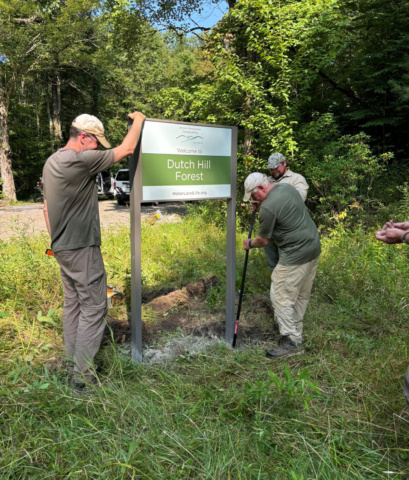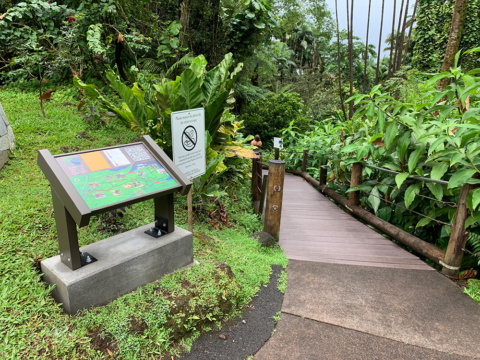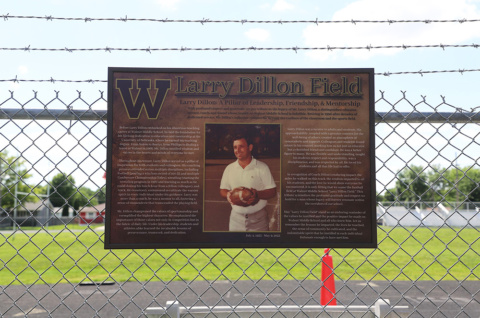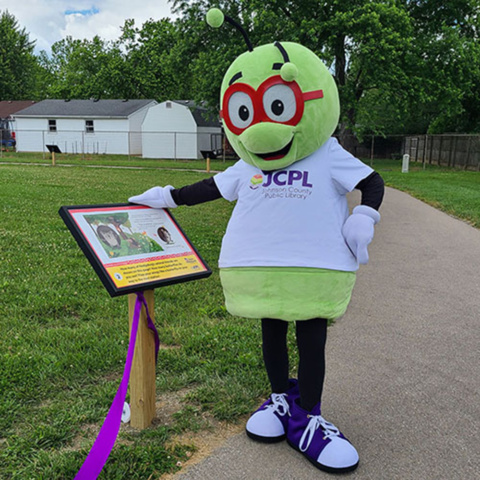People visit parks and recreation areas for a wide variety of reasons: education, adventure, relaxation, exercise — the list goes on. The one reason that each visitor has in common is that they are searching for something they value (Bacher et al. 8). When looking at the intricate world, it is human nature to ask questions and want to make meaning of experiences. What event took place here? What year was this built? Why is this location so special? What is the origin of this flower, and what mountain range is that? Site-specific interpretation is vital to learning, understanding and finding value in an area’s past and present, while also generating future action.
“Through interpretation, understanding; through understanding, appreciation; through appreciation, protection.”
–Freeman Tilden, Interpreting Our Heritage
What Is Interpretation?
Interpretation is the act of giving meaning, and in the process, it creates a connection between people and their surroundings. The National Association for Interpretation (NAI) defines interpretation as “a mission-based communication process that forges emotional and intellectual connections between the interests of the audience and the meanings inherent in the resource.” Connections involve moments of discovery, revelation or insight. Countless opportunities for visitors to find value and connect to a site happen when someone intentionally, and successfully, links a location’s resources to the meanings resources represent (Bacher et al. 5).
There are two main ways to deliver interpretation and share values. Personal services, such as a tour guide, and media services, such as a sign or brochure, all deliver interpretive messages (Bacher et al. 6). Through activities such as demonstrations and guided walks, personal services provide opportunities for visitors to interact with a professional. Although extremely beneficial, personal services can only reach a limited amount of people due to ever-changing climates and availability.
When visitors and residents come to explore the hundreds of thousands of Pennsylvania parks and recreation areas every year, there are millions of opportunities to create connections and spark action through interpretation. This can be accomplished at the visitors’ convenience, year-round, without a guide or staff member, through thoughtful and well-designed interpretive signage.
Developing Interpretive Signage
Signs are a necessity at every park. They serve a multitude of purposes and enhance outdoor spaces while increasing awareness and educational opportunities. Signage is an extremely popular choice for interpretive media services. Although the process of developing interpretive signage requires many hours of research and design, when the final product is built to last, the message will be shared for years to come. To create interpretive signage, the interpreter must have a deep understanding or willingness to research and discover the significance of events, places and people. Every park and recreation area has a story to tell or information to share with visitors. Consider installing an interpretive signage exhibit where:
• A consistent narrative is needed
• Historical or contemporary events took place
• There are thought-provoking manmade or natural structures
• Visitors naturally congregate and ask questions
• Action or change is desired of the visitors’ attitude or behavior
• Significant provocation is lost without interpretation
The physical location of the sign will determine what it will communicate. What is the relationship between the sign and the subject it is interpreting? How accessible is the sign and how long will viewers stop to read? The National Park Service suggests that an interpretive sign will be read in 45 seconds or less. Start with what is distinct about the location and determine how the sign will enhance the visitors’ perception as they are physically standing on-site. Through the skillful use of engaging text, design and layout, the interpretation will come to life. This is where a professional design team might be necessary to assist in the storytelling process. Use these tips when developing the content for the interpretive sign:
• Know the audience and write to an appropriate reading level
• Use short sentences and paragraphs
• Break up paragraphs with images and subtitles
• Have a clear balance of text and graphics
• Incorporate illustrations, maps, timelines and photographs
• Do not just state facts — tell a story
The style of panel and frame will determine how the interpretation will be viewed. It is important that the complete interpretive exhibit is approachable as well as durable. Choose a fabricator that is willing to send actual material samples and answer the many questions that arise throughout the process. There are many things to consider when deciding on an interpretive exhibit:
• What materials are suitable for the environment?
• How long will these materials last, and can they endure high visitor traffic?
• Are the materials recoverable from graffiti and easy to maintain?
• Is the fabricator a reputable signage company?
• Should the panel be positioned at an angle or upright?
• Will the exhibit base be buried or mounted on a surface?
• Can the exhibit be easily installed, and are installation instructions included?
• How available is the company representative to answer questions?
With an interpretive goal as the focus and the visitors’ experience always in mind, creating interpretive signage will establish value and meaning that will have a ripple effect for years to come. A walk in the woods becomes so much more when a visitor connects the path to those who walked there centuries before. There are endless opportunities to find deeper connections, and it is up to park professionals to use their resources and stories to educate those who are willing to learn. When a connection is made between a visitor and a location, appreciation is created, and actions can occur. Interpretive signage is an important step to creating a better world for future generations.
Source:
Foundations of Interpretation Curriculum Content Narrative, 2007, by Kevin Bacher, Alyssa Baltrus, Beth Barrie, Katie Bliss, Dominic Cardea, Linda Chandler, Dave Dahlen, Jana Friesen, Richard Kohen, Becky Lancome
This article is an excerpt from the Pennsylvania Recreation & Parks Magazine Fall 2020 Issue. For more information on Pannier products, browse our website or fill out a contact form. We look forward to an opportunity to help you with your next signage project.





